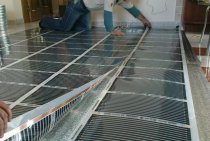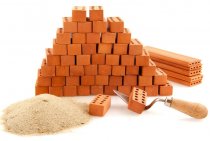Heating elements Heating elements for heating types, principle of operation, selection rules
Electric heating elements have not changed their design for decades and remain in demand in heating equipment. The shape of these devices, structural materials are changing, but the principle of operation and efficiency remain unchanged.
When choosing heating elements for heating, it is important to know their varieties and the scheme of work, on which the correct functioning of the equipment depends. articles:
articles:
- Purpose of heating elements
- Internal arrangement of electric heaters
- The principle of operation of the device
- Types of heating elements for heating appliances
- Tubular models for domestic heating
- Finned version of electric heaters
- Block structures of heating elements
- Cartridge type devices
- Additional functions of electric heaters
- How to choose a heating element
- Calculation of the power of the device
- Accounting for design features
- Heating tube length
- Availability of additional functionality
- Conclusions and useful video on the topic
Purpose of heating elements
Electric heaters have gained popularity due to their versatility and high efficiency. All the electricity they consume is used for its intended purpose - for heating the surrounding space.
The main heating devices where TENs are used are:
- Portable and stationary oil electric heaters.
- Water heating radiators.
- Towel dryers for the bathroom.
- Electric fireplaces.
- Electric convectors.
- Electric boilers.
The specified equipment can be used as the main or additional source of heating. It is inexpensive, easy to install and does not require special skills for operation.
You can connect the heating element to the cast-iron central heating radiator after disconnecting the common riser. Such a device can be used for primary and secondary heating.
Leaky heaters
Leaky heaters belong to one of the subtypes of closed type heating devices. The design of such devices includes heating elements in the form of a tape or a spiral, which are protected by insulating materials that prevent direct contact of the heating element with the heated object, but do not prevent contact with air. Often, ceramic beads are used as insulators. The design of such devices is considered simple, but not very durable. Leaky heating elements, working at the expense of nichrome or fechral spiral wire, are placed in special metal casings. This is a completely different type of design of a leaky heater. The casing is filled with an insulating powder. This version of the heater is more reliable in operation, but warms up longer.
Leaky heaters can also be called:

The principle of operation of the heating cable
The principle of operation is that electrical energy is converted into heat. The peculiarity of such a heating system is that, without the use of an oxidizer and fuel, it receives energy and converts it into heat. The heating system heats up from the electricity passing through it and prevents freezing of communications. Therefore, for the water supply, it is imperative to purchase a heating cable, it will help to avoid failure of the water supply networks during the cold season.
To heat the external pipeline, wires with a seamless, tight and damage-resistant sheath are used, which are not afraid of temperature changes. The heating element is inside the outer layer.When the air temperature drops, the heating cable is connected to electricity. The heating element starts to work and heats the entire system. If the air temperature rises, the wire is disconnected from the mains and the pipeline operates as usual.
Open coil heaters
Open heaters are presented in the form of a spiral heating element, which is placed in special insulating grooves or suspended using brackets. Heat supply from such heaters is produced by radiation or convection. These heaters have a simple circuit, quickly generate the necessary heat, are inexpensive and easy to repair. The main disadvantages are their low electrical safety, exposure to mechanical damage and possible short circuits.
For example, open coil heaters are:
wire heaters, etc.



